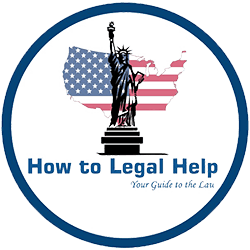“You may object to this subpoena by sending or delivering a written objection, stating your valid reason, to [Insert the name and address of the party, or attorney representing the party seeking production of documents, electronically stored information, or tangible things or the inspection of premises]. Any objection must be received within ten days after you receive the subpoena. If the time specified in the subpoena for compliance is less than ten days, any objection must be received at least 24 hours before the time specified for compliance. If you make a timely objection, you do not need to comply with this subpoena unless the court orders otherwise. You will be notified if the party serving the subpoena seeks a court order compelling compliance with this subpoena. You will then have the opportunity to contest enforcement. Failure to obey this subpoena, without making a timely objection, and stating a valid reason, may be contempt of court.”
N.d. R. Civ. P. 45
Joint Procedure Committee Minutes of September 24-25, 2016, page 26; January 31-February 1, 2013, pages 24-25; September 27, 2012, pages 8-10; January 26-27, 2012, pages 3-7; September 30, 2011, pages 12-15; April 28-29, 2011, page 25; September 23-24, 2010, pages 32-33; April 24-25, 2008, pages 22- 25; September 28-29, 2006, pages 25-27; April 27-28, 2006, pages 14-15; January 29-30, 1998, page 20; January 25-26, 1996, page 20; January 27-28, 1994, pages 11-16; April 29-30, 1993, pages 4-8, 18-20; January 28-29, 1993, pages 2-7;May 21-22, 1987, page 3; February 19-20, 1987, pages 3-4; October 30-31, 1980, pages 26-29; November 29-30, 1979, page 12; Fed.R.Civ.P. 45. 45.
EXPLANATORY NOTE
Rule 45 was amended, effective July 1, 1981;January 1, 1988;January 1, 1995;March 1, 1997;March 1, 1999;March 1, 2007;March 1, 2008;March 1, 2009;March 1, 2012;March 1, 2013;March 1, 2014; amended by Order dated December 22, 2016 effective March 1, 2017.
Rule 45 was revised, effectiveJanuary 1, 1995, in response to the 1991 federal revision. Significant changes to North Dakota’s rule include the following: (1) An action must be filed before a subpoena may issue; (2) A subpoena may compel a non-party to produce evidence independent of any deposition; (3) A subpoena may compel the inspection of premises in the possession of a non-party; and (4) Notice must be printed on a subpoena advising of the right to object when pretrial or prehearing production or inspection is commanded. The scope of discovery under Rule 26 is not intended to be altered by the revision.
Rule 45 was amended, effectiveMarch 1, 2008, in response to the 2006 federal revision. Language was added to the rule to clarify that production of electronically stored materials may be demanded by subpoena and to provide guidance in dealing with requests for electronically stored materials.
Rule 45 was amended, effectiveMarch 1, 2009, in response to the 2007 amendments to Fed.R.Civ.P. 45. The language and organization of the rule were changed to make the rule more easily understood and to make style and terminology consistent throughout the rules.
Subparagraph (a)(1)(A)(iii) was amended, effectiveMarch 1, 2013, to clarify that the notice required by subdivision (f) must be made part of the subpoena when the subpoena seeks only pretrial or prehearing production of documents, electronically stored information, or tangible things or the inspection of premises.
Subparagraph (a)(1)(C) was amended, effectiveMarch 1, 2014, to explain that the phrase “electronically stored information” includes reasonably accessible metadata.
Paragraph (a)(2) was amended, effective March 1, 2017, to remove the requirement that a subpoena issued by a clerk have a seal affixed.
Paragraph (a)(3) was amended, effectiveMarch 1, 2013, to direct persons to N.D.R.Ct. 5.1 for information about how to proceed with discovery in this state in an action pending in an out-of-state court. N.D.R.Ct. 5.1 outlines procedure for interstate depositions and discovery.
Subdivision (b) was amended, effectiveMarch 1, 2007, to eliminate the requirement for parties to serve a separate notice for production when commanding a person to attend a deposition to give testimony and produce documents or things.
Paragraph (b)(2) was amended, effectiveMarch 1, 2009, to make it clear that notice must be served on each party in a matter before a subpoena to take testimony or for production is served. Subdivision (f) was amended, effectiveMarch 1, 1999, to allow an objection to a subpoena to be sent via a commercial carrier as an alternative to mail. STATUTES AFFECTED: SUPERSEDED: N.D.C.C. § 31-05-22
N.D.R.Civ.P. 26 (General Provisions Governing Discovery), N.D.R.Civ.P. 30 (Depositions Upon Oral Examination), and N.D.R.Civ.P. 31 (Depositions of Witnesses Upon Written Questions); N.D.R.Crim.P. 17 (Subpoena); N.D.R.Ev. 510 (Waiver of Privilege by Voluntary Disclosure); N.D.R.Ct. 5.1 (Interstate Depositions and Discovery).
